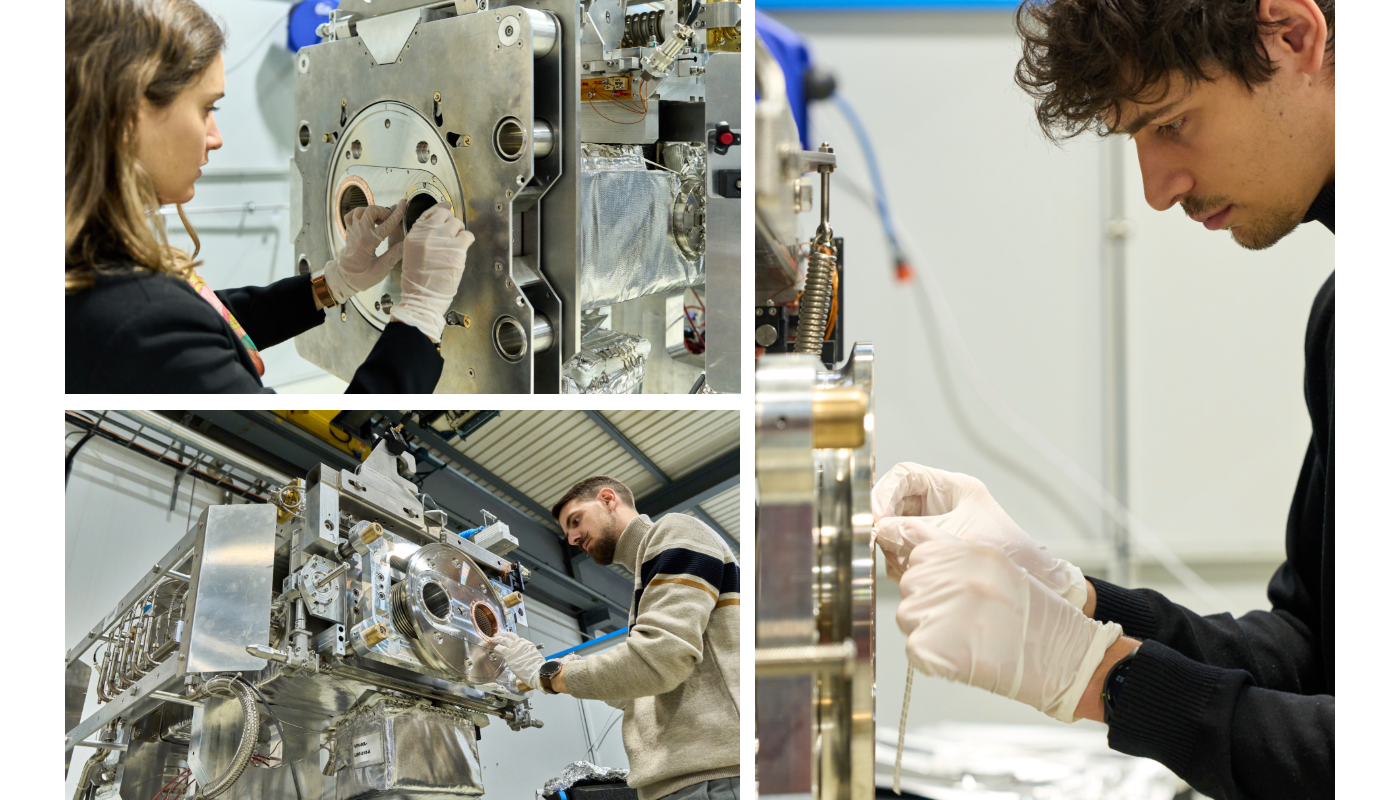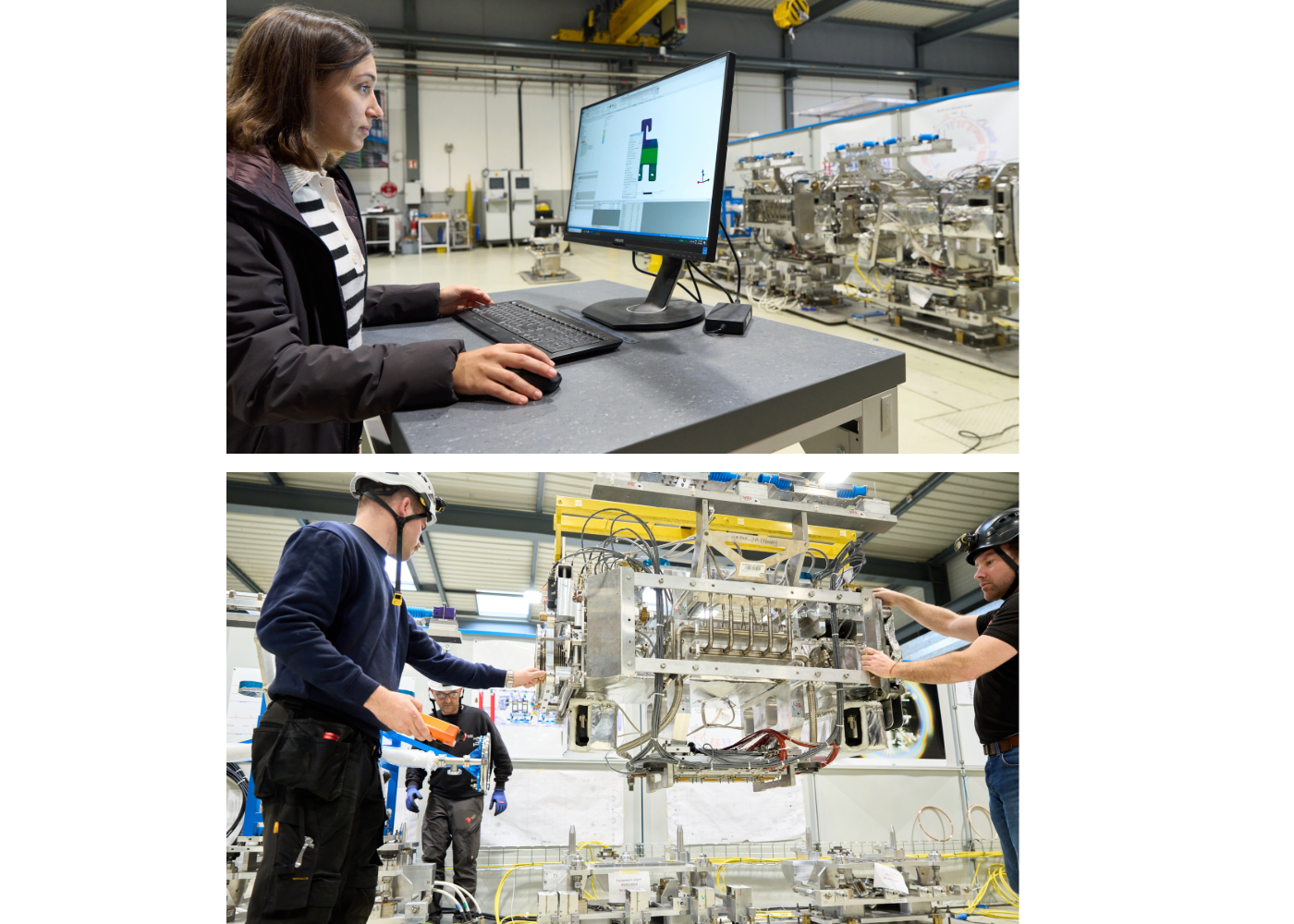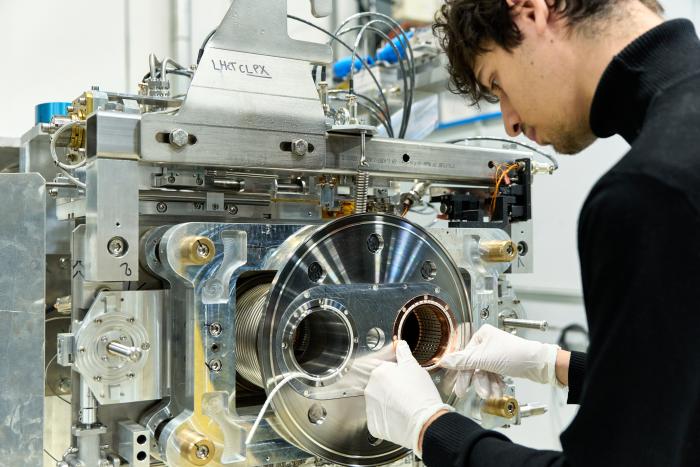By Lucas Hermida Pena (CERN)
Collimators are Beam Interaction Devices (BIDs) designed to remove stray particles from the beam bunches which could damage sensitive equipment.
Recently, two fully functional prototype double-beam collimators were fitted with new radiofrequency springs and then installed onto the assembly mock-up. In the current LHC, all collimators are single-beam, but these double-beam collimators are designed to handle both circulating beams, where one is cleaned by the jaws (blocks to intercept stray particles) and the other passes untouched through a drift tube.
The proton bunches, traveling through the LHC at nearly the speed of light, induce image currents in nearby materials. Without proper conductivity between components, these currents could cause heating, discharges, or beam instabilities.
In the new double-beam collimator design, there is a thin but deep gap between the flanges, connective elements commonly used to join pipe components together, due to their large diameter (DN300). In order to bridge this vacuum gap between the flanges, the collimators will be fitted with new RF springs - different from the traditional RF fingers.
These precise RF contacts ensure electrical continuity between collimator flanges under vacuum, allowing image currents to flow smoothly across these new vacuum gaps, protecting system performance and stability.
 Figure 2. Fitting of the RF springs. Marina Cavazza / CERN
Figure 2. Fitting of the RF springs. Marina Cavazza / CERN
After being fitted with the RF springs, the collimators were installed into the assembly mock-up for testing.
This mock-up was created to simulate the environment where the double-beam collimators will be installed, allowing comprehensive testing and validation. This setup has been used to assess the mechanical design of the overall system, alignment, integration and installation procedures of the collimators, as well as to perform any necessary acceptance checks. Notably, it has also tested the newly designed vacuum connection tool that allows the flange connection between two collimator units. This new vacuum interconnection tool is specific to the new generation of double-beam collimators. It is engineered to cope with the very little space available between collimators and is designed in view of possibly using robots to operate it.
 Figure 3. Movement to the mockup and assessing of collimators in the mockup. Marina Cavazza / CERN
Figure 3. Movement to the mockup and assessing of collimators in the mockup. Marina Cavazza / CERN
The purpose of the test on these prototype double-beam collimators was to confirm that the RF Springs exhibit the necessary elastic behaviour. Specifically, the springs must remain correctly positioned even if the collimators are disconnected—a scenario that can occur during commissioning or maintenance. The test confirmed both aspects, ensuring reliability of the connection and the integrity of the RF contact system.
In the HL-LHC, there will be 12 totally new double-beam collimators installed in Point 1 and Point 5, three on each side of the experiments and 10 new secondary single-beam collimators will be installed in Point 7.

